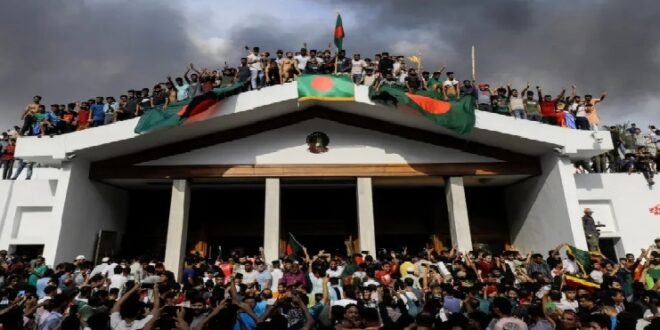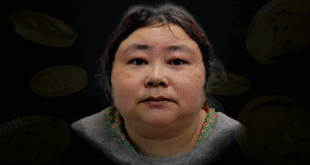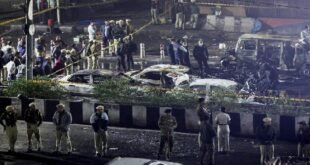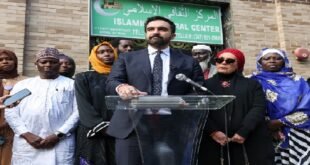07-08-2025
DHAKA: Sinthia Mehrin Sokal remembers the blow to her head on July 15 last year when she, along with thousands of fellow students, marched during a protest against a controversial quota system in government jobs in Bangladesh’s capital, Dhaka.
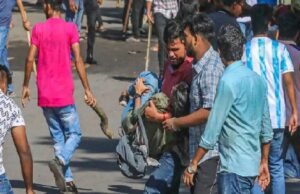 The attack by an activist belonging to the student wing of the then-Prime Minister Sheikh Hasina’s Awami League party left Sokal, a final-year student of criminology at the University of Dhaka with 10 stitches and temporary memory loss.
The attack by an activist belonging to the student wing of the then-Prime Minister Sheikh Hasina’s Awami League party left Sokal, a final-year student of criminology at the University of Dhaka with 10 stitches and temporary memory loss.
A day later, Abu Sayed, another 23-year-old student, was protesting at Begum Rokeya University in the Rangpur district, about 300km (186 miles) north of Dhaka, when he was shot by the police. A video of him, with his arms outstretched and collapsing on the ground moments later, went viral, igniting an unprecedented movement against Hasina, who governed the country with an iron fist for more than 15 years before she was toppled last August.
Students from schools, colleges, universities and madrassas took to the streets, defying a brutal crackdown. Soon, the young protesters were joined by their parents, teachers and other citizens. Opposition parties, including the Bangladesh Nationalist Party (BNP) and the Bangladesh Jamaat-e-Islami, lent crucial support, forming an unlikely united front against Hasina’s government.
“Even students in remote areas came out in support. It felt like real change was coming,” Sokal told media.
On August 5, 2024, as tens of thousands of protesters stormed Hasina’s palatial residence and offices in Dhaka, the 77-year-old leader boarded a military helicopter and fled to neighbouring India, her main ally, where she continues to defy a Bangladesh court’s orders to face trial for crimes against humanity and other charges.
By the time Hasina fled, more than 1,400 people had been killed, most when government forces fired on protesters, and thousands of others were wounded, according to the United Nations.
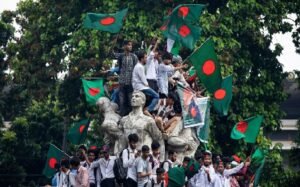 Three days after Hasina fled, the protesters installed an interim government, on August 8, 2024, led by the country’s only Nobel laureate, Muhammad Yunus. In May this year, the interim government banned the Awami League from any political activity until trials over last year’s killings of the protesters concluded. The party’s student wing, the Chhatra League, was banned under anti-terrorism laws in October 2024.
Three days after Hasina fled, the protesters installed an interim government, on August 8, 2024, led by the country’s only Nobel laureate, Muhammad Yunus. In May this year, the interim government banned the Awami League from any political activity until trials over last year’s killings of the protesters concluded. The party’s student wing, the Chhatra League, was banned under anti-terrorism laws in October 2024.
Yet, as Bangladesh marks the first anniversary of the end of Hasina’s government on Tuesday, Sokal said the sense of unity and hope that defined the 2024 uprising has given way to disillusionment and despair.
“They’re selling the revolution,” she said, referring to the various political groups now jostling for power ahead of general elections expected next year.
“The change we fought for remains out of reach,” said added. “The (interim) government no longer owns the uprising.”
‘What was my son’s sacrifice for?’
Yunus, the 85-year-old Nobel Peace Prize winner presiding over Bangladesh’s democratic overhaul, faces mounting political pressure, even as his interim government seeks consensus on drafting a new constitution. Rival factions that marched shoulder to shoulder during anti-Hasina protests are now locked in political battles over the way forward for Bangladesh.
On Tuesday, Yunus is expected to unveil a so-called July Proclamation, a document to mark the anniversary of Hasina’s ouster, which will outline the key reforms that his administration argues Bangladesh needs and a roadmap to achieve that. (Int’l News Desk)
 Pressmediaofindia
Pressmediaofindia
